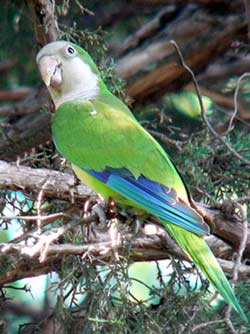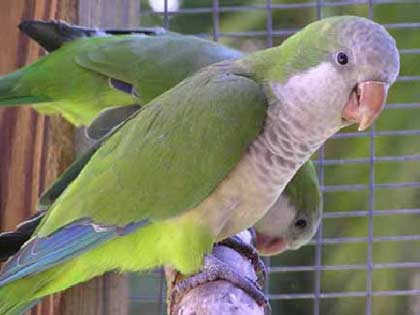Previously, it was unclear what enabled parrot species to excel in “mimicking” human speech. It turns out that these skillful imitators, adorned with feathers, also utilize their tongues to produce sounds similar to vowels, much like we do.
 |
|
“Monk Parakeet” – Myiopsitta Monachus |
When humans speak, sound is produced in the larynx and can be modified by the movement of the tongue in the oral cavity, allowing us to create complex vowels and consonants.
Previously, many researchers believed that birds produced and modified sounds through a vocal organ similar to the larynx, with the tongue playing no role in this process.
It is known that parrot species also move their tongues when they “speak,” prompting Gabriel Beckers from Leiden University in the Netherlands and colleagues to investigate how these movements contribute to their impressive “mimicking” ability. Their findings were published in *Current Biology*.
The research team conducted experiments on five wild “Monk Parakeets” (Myiopsitta monachus), which had been captured and euthanized as part of a government pest management program in Florida. In each specimen, they replaced the vocal organ with a tiny speaker and then used a hook to move the tongue while the speaker served as the sound source. The team found that movements of less than one millimeter by the tongue made a significant difference in the quality of the emitted sound, referred to as formants. Beckers noted “it’s greater than the difference between the sounds “a” and “o” in humans.” He believes that they can skillfully use their tongues to accurately express sounds, forming the basis for their mimicking ability.
Irene Pepperberg from the Massachusetts Institute of Technology, who specializes in bird vocalization, stated: “In the wild, parrot species seem to use these sounds for communication. Subtle differences in emitted sounds are crucial for these birds.” She illustrated this with an example comparing sparrows and parrots: male sparrows only sing during certain seasons to attract females, whereas parrots sing year-round. They undoubtedly use formants and other sounds to convey complex information such as species identification and danger alerts.
Beckers suggests: “This discovery indicates that the communication of parrots may be more complex than we previously thought.”
Pepperberg has direct evidence in this area. Her team has studied the African Grey parrot named Alex in the laboratory for 27 years. Alex could accurately vocalize sounds for various objects, shapes, colors, and materials, distinguishing between similar and different concepts and requesting changes in his environment from experimenters.
Pepperberg believes that this ability in parrots is harmless and contributes to their linguistic richness.
Recent studies suggest that at least two species capable of producing formants are humans and parrots. The movement of the tongue creates complexity in tone, a phenomenon proven to be beneficial for both species.

“Monk Parakeet” – Myiopsitta Monachus (Photo: pelicanman)


















































